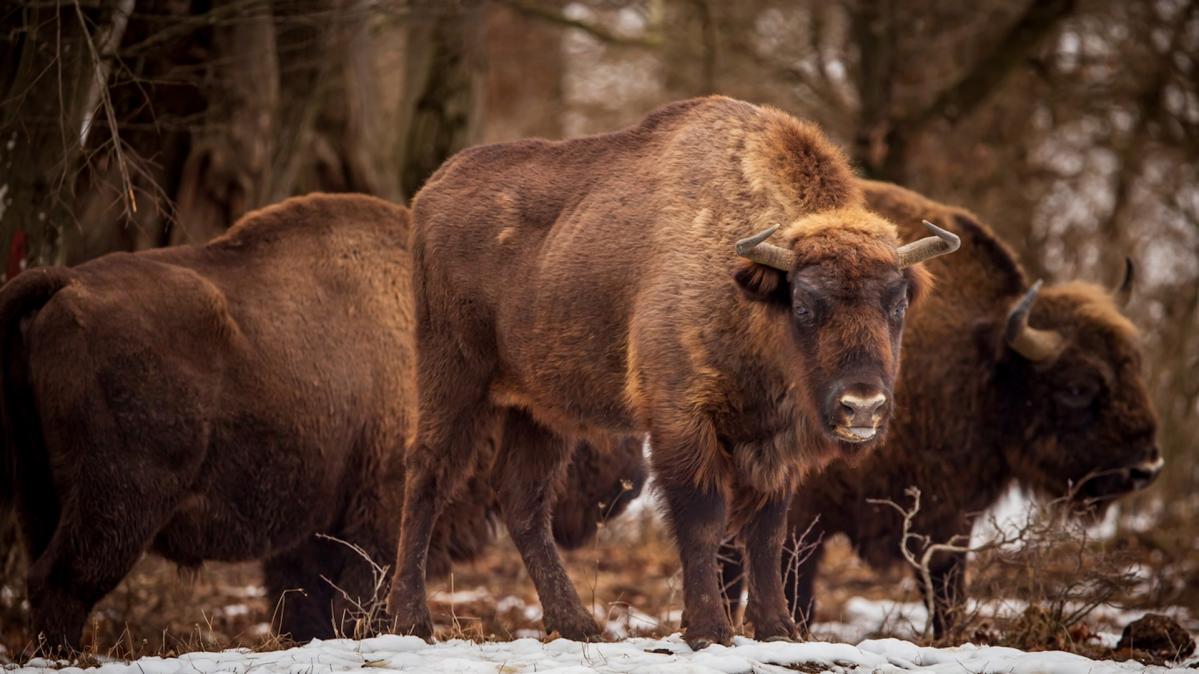

A small herd of bison in Romania has the potential to cancel out a sizable amount of our planet-warming pollution, according to one group of scientists.
The new research, reported by the Guardian, looked at a group of 170 bison roaming freely within about 20 square miles of land in Romania’s Tarcu mountains. In the paper, which has yet to be reviewed, the researchers assert that the grazing behaviors of these bison could potentially capture more than 59,000 tons of planet-heating carbon each year. That is roughly the equivalent to the annual output of 43,000 U.S. vehicles.
When large mammals such as bison graze, they help stimulate plant growth and secure carbon stored in the soil, making them a nature-based solution to our swiftly overheating planet.
European bison disappeared from Romania more than 200 years ago. Between 2014 and 2021, conservationists reintroduced 100 animals to the landscape, and now the herd has grown to 170. According to the scientists, the landscape’s carbon-storing potential is 9.8 times greater with the bison on the land, although this figure could be 55% higher or lower.
“These creatures evolved for millions of years with grassland and forest ecosystems, and their removal, especially where grasslands have been plowed up, has led to the release of vast amounts of carbon,” the study’s lead author Oswald Schmitz of the Yale School of the Environment told the Guardian. “Restoring these ecosystems can bring back balance, and ‘rewilded’ bison are some of the climate heroes that can help achieve this.”
The reintroduction of bison to Romania has also sparked a growing ecotourism industry, putting money into the pockets of local people, according to the Guardian article. Many conservationists tout ecotourism as a way to alleviate poverty. One study in Costa Rica supported this claim, finding lower poverty levels in areas where ecotourism was present, Mongabay reported.
Watch now: Lime executive reveals true impact sustainable choices have had on business
Although these results can’t exactly be extrapolated to bison in other environments — U.S. prairies aren’t as productive in carbon storage, for instance — the scientists did note promising potential from other species that could enhance ecosystems’ abilities to store carbon, including forest elephants and musk oxen.
This isn’t the first time researchers have looked at the connection between wildlife and carbon storage. A previous study demonstrated the role that large animals play in carbon capture and storage and advocated for “trophic rewilding,” or the reintroduction of certain species into an environment to encourage top-down interactions between predators and prey.
Plus, animals aren’t the only nature-based solutions we have to fight rising global temperatures. For instance, scientists estimate that seagrass provides around $88.3 billion worth of carbon storage services every year. And some are looking to carbon farming as a way to increase how much carbon is stored in soils on agricultural lands.
Join our free newsletter for cool news and cool tips that make it easy to help yourself while helping the planet.
EMEA Tribune is not involved in this news article, it is taken from our partners and or from the News Agencies. Copyright and Credit go to the News Agencies, email news@emeatribune.com Follow our WhatsApp verified Channel









